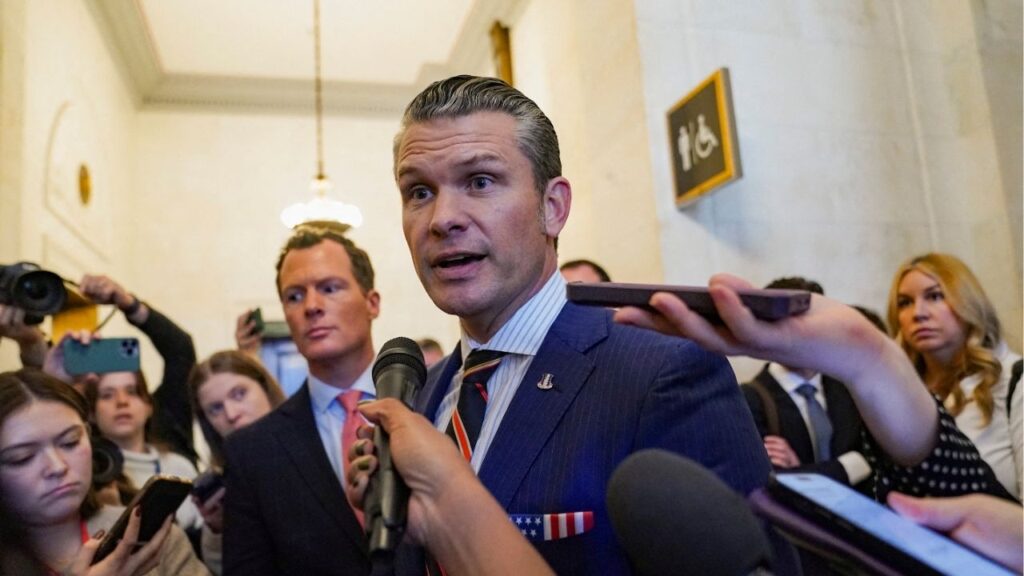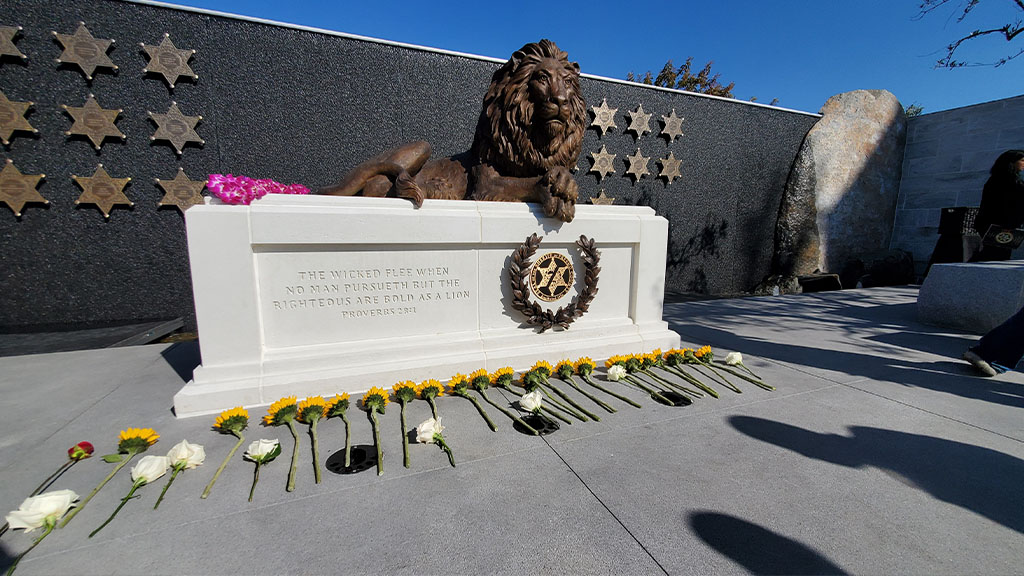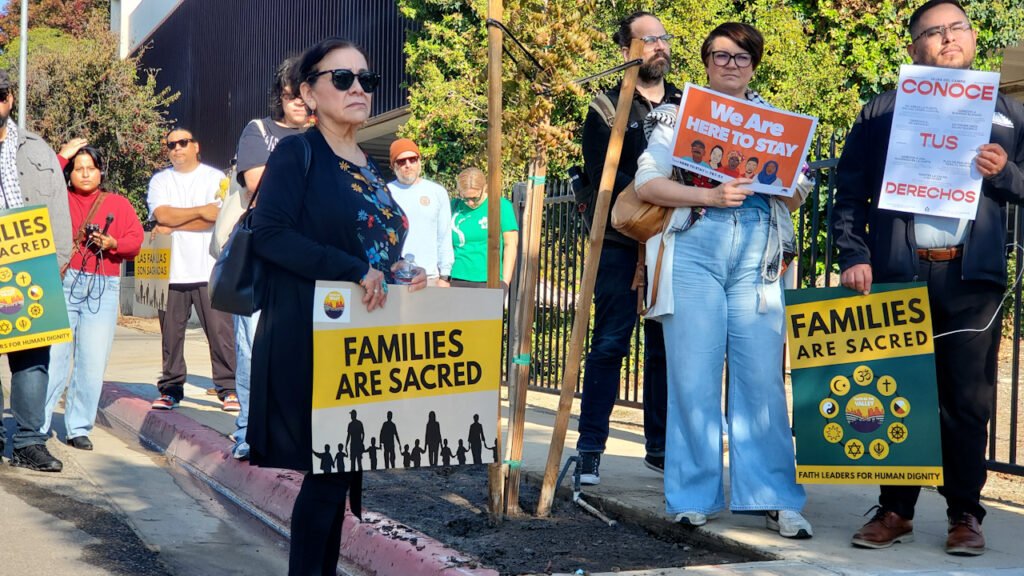Share
Fresno City Council President Miguel Arias wants to add a warning when council discussions might be offensive.
But, is adding a disclaimer— but not outright banning such conversations, images or videos — constitutional?
Experts that GV Wire spoke to said probably, with certain caveats.
Listen to this article:
Gun Debate Sparked Council Rules Change
Arias wants to change the language to the council’s Rules of Procedure, the 20-page rulebook the council uses to set agendas and conduct meetings. The council tweaks the rules on occasion.
“Graphic or potentially offensive images, video, or discussion shall be preceded by a disclaimer, allowing for sensitive or objecting individuals to exit for that portion of the presentation,” would be added to the rules about order and decorum.
During the Jan. 16 council meeting debate about banning concealed weapons at City Hall, councilman Garry Bredefeld played video of a news story about a 2010 shooting at a Florida school board meeting. The video featured graphic images of a gunman firing shots at the board members. No one was hit. The gunman eventually died from a self-inflicted shot (not seen in the video).
Arias cut off the video, angering Bredefeld.
“You don’t cut any video. That’s my video,” Bredefeld shouted. “That’s the reality with people with guns. If you don’t like it, too bad.”
The video resumed. Bredefeld also played video of a recent Texas church shooting, where a churchgoer with a gun prevented a shooter from causing more deaths.
After the meeting, Arias said he was concerned about children who might be watching the meeting on television at home.
“Those present have an opportunity to step out or look away,” Arias said of his proposal.
Experts Agree Warning Is OK

“They probably avoided a major collision in a court by not banning these ideas.” — Gene Policinski, Freedom Forum Institute
“They probably avoided a major collision in a court by not banning these ideas,” Policinski said. “If they banned that, they would have a real problem with the definition of graphic or offensive.”
He calls the reasoning to protect children at home “overbroad.”
“I think a court would be very concerned,” Policinski said.
Two other First Amendment scholars, James Wheaton and Glen Smith generally agreed that the warning itself does not violate the Constitution.
Disagreement on Chilling Effect

“It could have a chilling effect on what people might say if it were to be enforced.” — Glen Smith, First Amendment Coalition
A senior counsel and founder of the Bay Area-based First Amendment Project, Wheaton said that the warning is fine as long as it doesn’t go beyond that.
“A non-factual, non-judgmental warning … is providing more information, not restricting information. It is not preventing the person from then speaking, and showing whatever is they wanted to do,” Wheaton said.
Wheaton says such a warning would allow members of the audience to choose whether they wanted to participate in hearing the message.
Smith, the litigation director of the First Amendment Coalition in San Rafael, disagreed.
“It could have a chilling effect on what people might say if it were to be enforced. You would really be unsure of when you cross the line,” Smith said. “Putting them in a situation where they might have to make a disclosure under government compulsion is unconstitutional.”
Preventing Graphic Material
Arias says requiring disclaimers is nothing new.
“Even on television and on news outlets, disclaimers are required,” Arias said. “Can the next councilman or member of the public show pornography? … The fact is, we didn’t have a rule to clarify.”
Bredefeld doesn’t object to a disclaimer.
“It’s OK for someone to express that this video may be objectionable. That’s fine if someone wants to say that. But, it’s subjective. What I might find objectionable, others might not,” Bredefeld said.
However, Bredefeld does not want restrictions on what can be shown or discussed.
“No one should be restricted from sharing their viewpoint and exercising their First Amendment rights,” Bredefeld said.
Allowable Limits
The three First Amendment experts said the government can limit public speaking.
One concerns the time, place, and manner of speech.
Restrictions can be imposed as long as they are viewpoint neutral. For example, it’s OK to limit the time a speaker has or when they can speak. Shouting obscenities and making threats could also be restricted.
Other Procedural Changes
Arias proposes other changes to the council rules.
A councilmember may not use presentation material unless it is submitted the prior Thursday to a council meeting. Otherwise, either the council president or five members of the council would have to approve the material.
“Those are two things that did not occur in this last meeting,” Arias said. “The council was not aware that murder was going to be shown and broadcast live.”
Bredefeld objects to the deadline, noting that new information can come up at the last minute.
Other proposed changes:
— Closed session items would be heard around 1:30 p.m., or when council meetings resume from lunch break. Before, closed session items were generally heard at the end of the public portion of the meeting.
— A rule limiting contract or budget items exceeding $500,000 to be heard on the consent calendar would be removed.
— Clarifies what type of issues people may discuss when it is time for public comment. Namely, it allows the public to make remarks, but not ask councilmembers direct questions.
— Alters how points of order are raised.
Categories




















